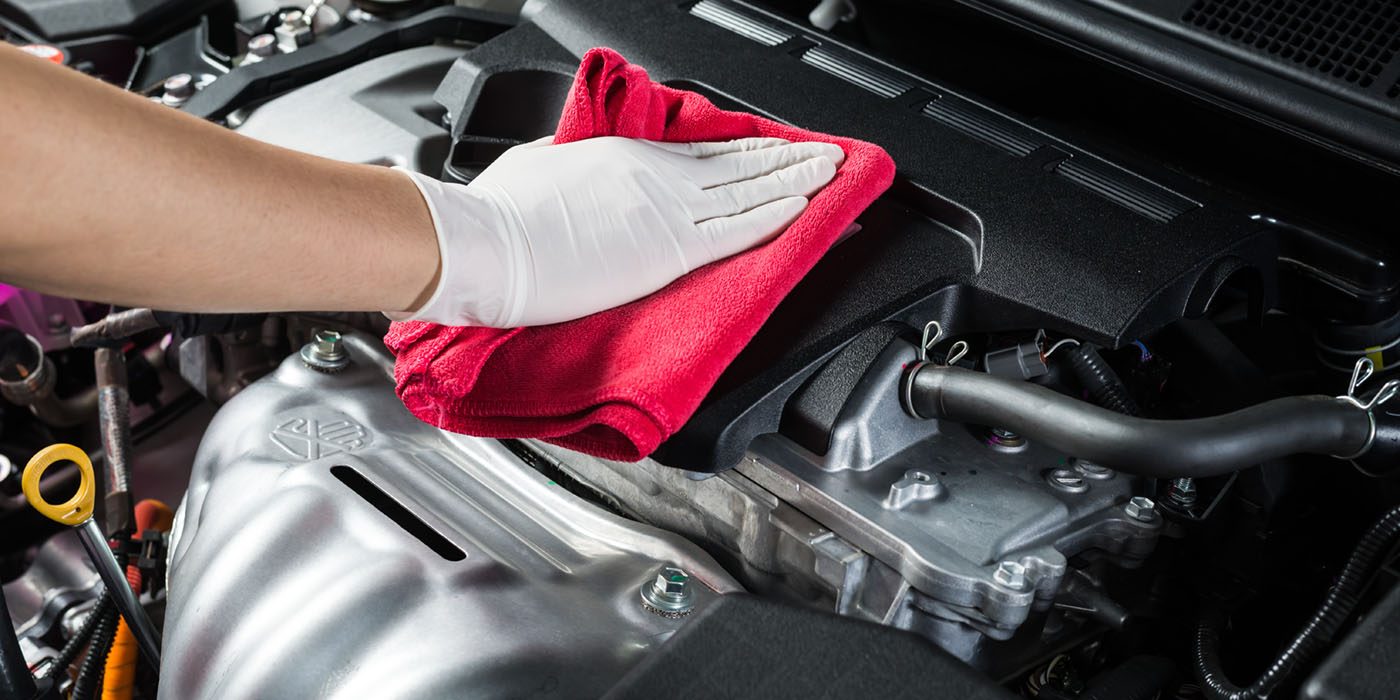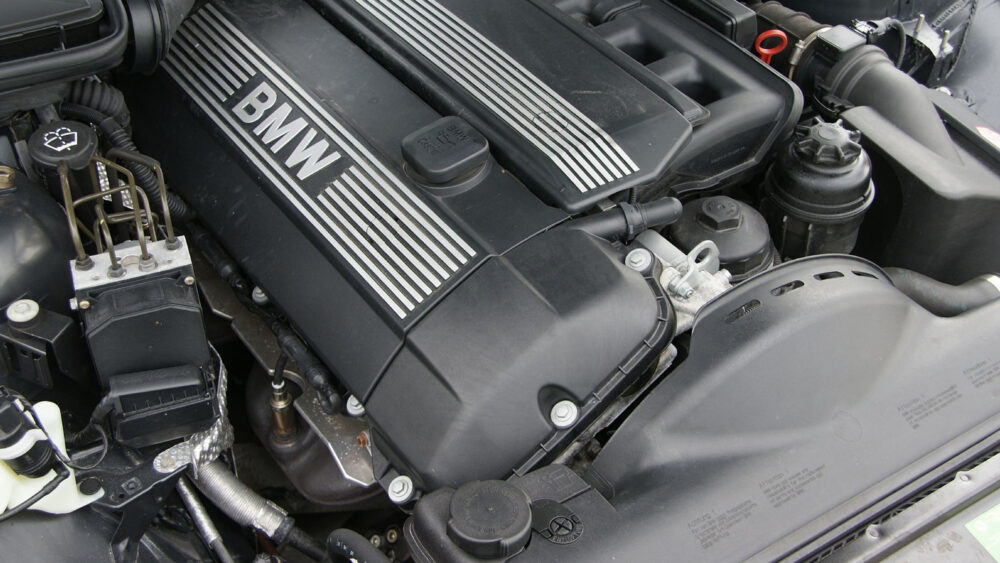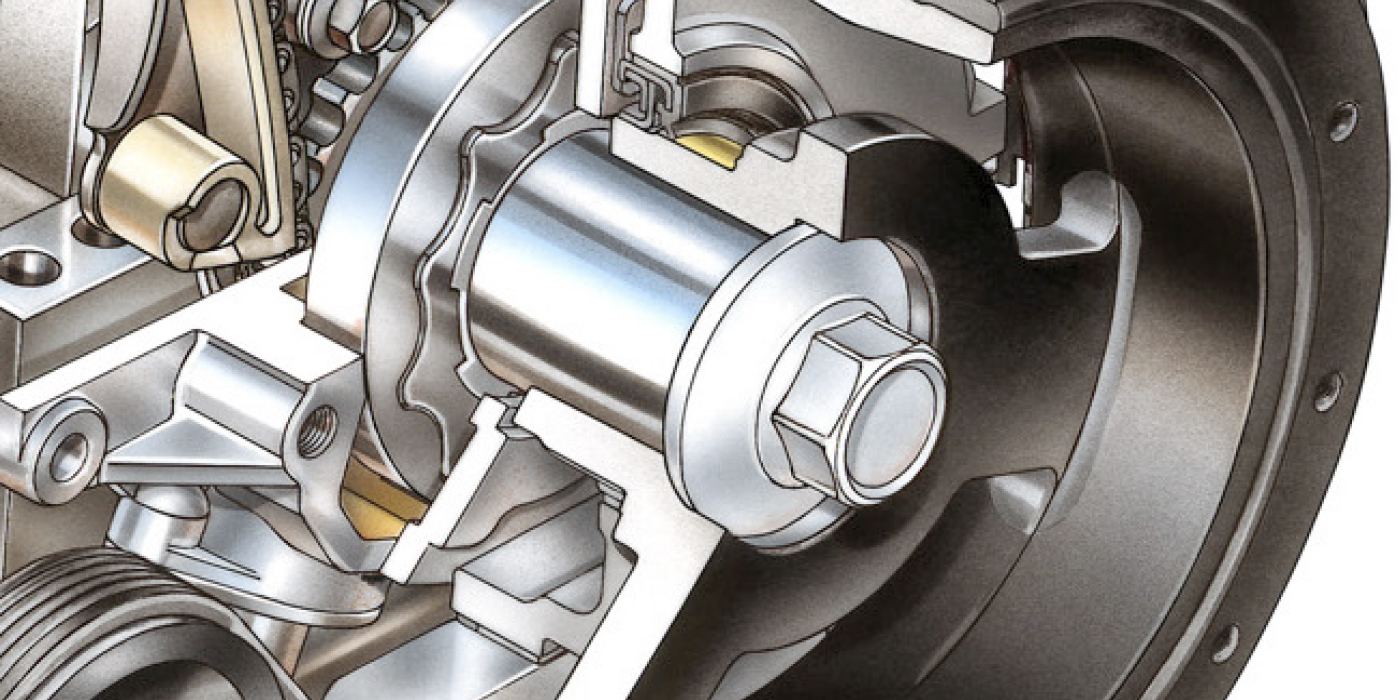By Bob McDonald, diesel specialist
One of the most overlooked preventive maintenance items in a diesel engine is the coolant system.
Maintaining the coolant system is just as important as an oil change — in fact, the coolant condition in a diesel engine may even be more important than in a gasoline engine.
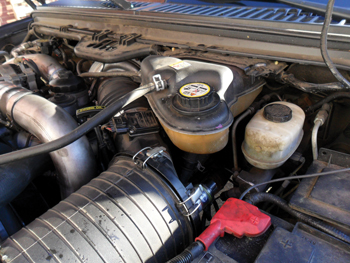 I often wonder why so many owners aren’t more concerned with the condition of the coolant in their engines. I don’t know if it’s the price of the coolant that tends to scare them away or what. Most mid-size truck diesel engines take approximately six gallons of coolant to fill the system. That would be three gallons of concentrate mixed with three gallons of distilled water.
I often wonder why so many owners aren’t more concerned with the condition of the coolant in their engines. I don’t know if it’s the price of the coolant that tends to scare them away or what. Most mid-size truck diesel engines take approximately six gallons of coolant to fill the system. That would be three gallons of concentrate mixed with three gallons of distilled water.
In actuality, the biggest reason for neglect is probably that owners simply don’t understand how important it is to periodically check the coolant’s condition. The condition of the coolant means everything to engine longevity. Today’s antifreeze-coolant isn’t just for freeze protection in the winter months, but the correct formulations contain chemical properties that help protect diesel engines from common cavitation issues.
Diesel engines often suffer from cavitation caused by the extreme pressures encountered in the combustion cycle of the engine.
The diesel combustion cycle creates distortion. On the intake stroke, air is introduced into the cylinder. The intake valve closes and the piston starts traveling up the bore, compressing the air that was just ingested. Right before the piston reaches TDC (top dead center), diesel fuel is injected into the cylinder. Then a massive explosion happens and starts forcing the piston down in the bore. This massive explosion causes what is called a “jarring effect,” which can’t be seen by the human eye, but does actually happen.
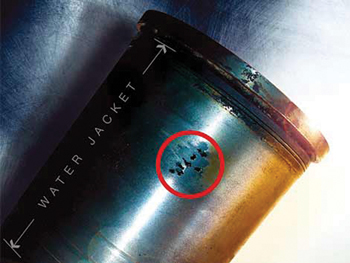 This “jarring effect” is found mostly in wet liner engines, those diesel engines that have replaceable cylinder liners. When the explosion occurs, the liner distorts and rocks inside the block, actually moves away from the engine block, ingesting a small amount of air into the cooling system. This small amount of air makes tiny bubbles that form around the cylinder’s liner and these tiny bubbles can then attack the cylinder liner with a force sometimes as much as 60,000 psi.
This “jarring effect” is found mostly in wet liner engines, those diesel engines that have replaceable cylinder liners. When the explosion occurs, the liner distorts and rocks inside the block, actually moves away from the engine block, ingesting a small amount of air into the cooling system. This small amount of air makes tiny bubbles that form around the cylinder’s liner and these tiny bubbles can then attack the cylinder liner with a force sometimes as much as 60,000 psi.
This amount of pressure from the bubbles actually pings the liner and starts shearing away the liner microscopically. After a period of time, this shearing will cause small pin holes to appear in the liner, which eventually make their way through to the cylinder bore.
When this happens, coolant will start to enter the cylinder bore and eventually the oil pan. The customer will complain of losing coolant while the oil level is rising. While it may sound hard to believe, this problem has been around for years. Luckily, there is a solution — supplemental coolant additives or SCAs.
The SCA will not stop the formation of bubbles, but will provide a protective barrier between the liner and the cavitation-causing bubbles. SCAs generally form a barrier with the use of nitrite, the level of which needs to be monitored in the cooling system on a regular basis. As the cavitation bubbles ping against the liner, they remove the layer of nitrite rather than the liner itself. The layer of nitrite is then replenished by the SCA. So it is a regenerative cycle, but can be depleted quickly.
In order to combat cavitation problems, some vehicle manufacturers install coolant system filters, which not only filter the coolant, but also have nitrite in the filter media. By servicing the coolant filter at certain intervals, the nitrite in the system should always be constant. When running a coolant filter, the use of an SCA is not necessary. This would only increase the concentration of nitrite, causing other problems.
The ideal amount of nitrite in a diesel cooling system (big diesel engines like over-the-road trucks and heavy equipment as well as mid-size truck diesel engines) is around 800 ppm (parts per million). If levels drop below this the protection of the cylinder liners is compromised. However, if using a little is good, it doesn’t necessarily mean that a lot is better. If the concentration of nitrite is greater than 800 ppm, other things are compromised. Sometimes greater concentrations of nitrite can cause the O-rings that seal the liners to deteriorate.
Most truck repair facilities monitor the nitrite level to ensure reliability of the coolant system and the effects it may have for future repairs. Test strips that tell the condition of coolant along with the level of nitrite are available at most auto parts stores or truck repair facilities.
Technological advances in the automotive industry have extended to antifreeze as well. I’m sure you’ve heard of extended-life coolants. These types of coolant are made up of different compounds other than glycol, along with different protection additives from those found in regular green antifreeze.
That is why most extended-life coolants are dyed colors such as red, gold and pink. The chemical properties that make up these coolants help combat the cavitation bubbles in a different way — the compounds take the place of nitrite and offer the same protection, so with an extended-life coolant, there’s no need for a test strip test on the coolant’s condition. The nitrite protection should remain until the coolant needs to be changed.
Powerstroke engines, along with other mid-size diesel pickup trucks, have what is known as dry liners. These liners are a part of the cylinder block like on a gasoline engine. But, that doesn’t mean that problems are not present. Cavitation can occur anywhere in a diesel engine due to the violent explosion of combustion. It’s a good idea to perform periodic checks to the nitrite level along with the condition of the antifreeze. The best thing to do is service according to the manufacturer’s recommendation.
For diesel trucks using green antifreeze, the recommendation of coolant service is usually around two years or 30,000 miles. For diesel engines running extended-life coolant, service is around five years or 100,000 miles. To be on the safe side, periodically check the antifreeze every six months.
One crucial often-overlooked component of the coolant system is the radiator cap. The radiator cap on the Powerstroke engine is rated at 16 psi. This is for both the 7.3L and 6.0L versions. When performing a periodic inspection, make sure the radiator cap is up to par. Have the cap tested to make sure that the coolant system is maintaining the correct pressure. The cap is what maintains the coolant system’s pressure to prevent boil over.
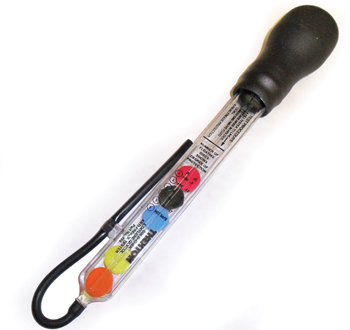 There are several ways to test the antifreeze in a diesel vehicle. One is with a conventional hydrometer coolant tester that can be purchased at your local parts store. This is basically a plastic tube with colored discs inside along with a squeeze bulb on top and a siphon hose at the bottom. The coolant can be drawn into the test tube created by suction from the bulb. The object is to see how many discs will float once the coolant is drawn into the tube. This is a measurement of specific gravity of the antifreeze. The degree of freeze protection is determined by how many discs float in the concentration of antifreeze.
There are several ways to test the antifreeze in a diesel vehicle. One is with a conventional hydrometer coolant tester that can be purchased at your local parts store. This is basically a plastic tube with colored discs inside along with a squeeze bulb on top and a siphon hose at the bottom. The coolant can be drawn into the test tube created by suction from the bulb. The object is to see how many discs will float once the coolant is drawn into the tube. This is a measurement of specific gravity of the antifreeze. The degree of freeze protection is determined by how many discs float in the concentration of antifreeze.
A low-tech device, the only variable in testing antifreeze this way is that the hydrometer can be temperature sensitive. A difference of up to 10° F can be seen if the antifreeze being tested is hot or cold. So test the vehicle’s antifreeze as close to the same temperature every time.
Another device for testing the antifreeze is more complex. The refractometer actually measures the way light bends as it travels through an object, which in this case is antifreeze. This device is often preferred because it is known to be more accurate — but it can change with temperature just like the hydrometer, so readings could be different depending on the temperature of the antifreeze.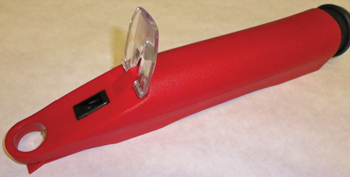
One complaint about the hydrometer is that if the coolant being tested has some oil content in it, this can coat the discs inside, causing an incorrect reading. Once the oil has coated the discs, the hydrometer may read other cooling systems wrong. With the refractometer, the glass is wiped clean with each sample and will be more accurate. Keep in mind though, that the refractometer is a bit more expensive. A good hydrometer will cost around $20 — a refractometer can cost as much as $200.
Remind your customer that the cost to maintain their cooling system is cheap compared to the price for you to work on their engine. They may not pay attention to mileage, but money can be a different story.




